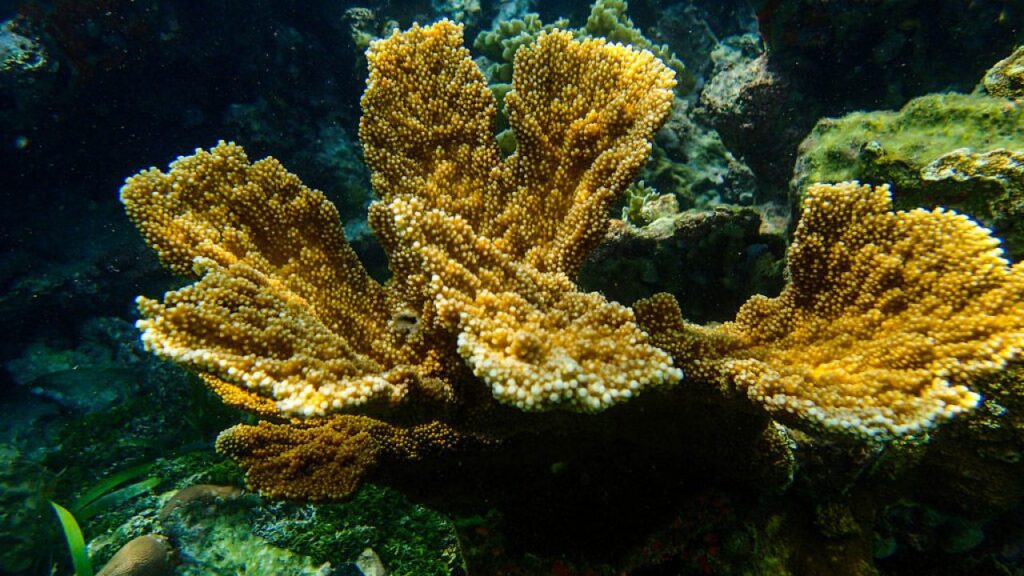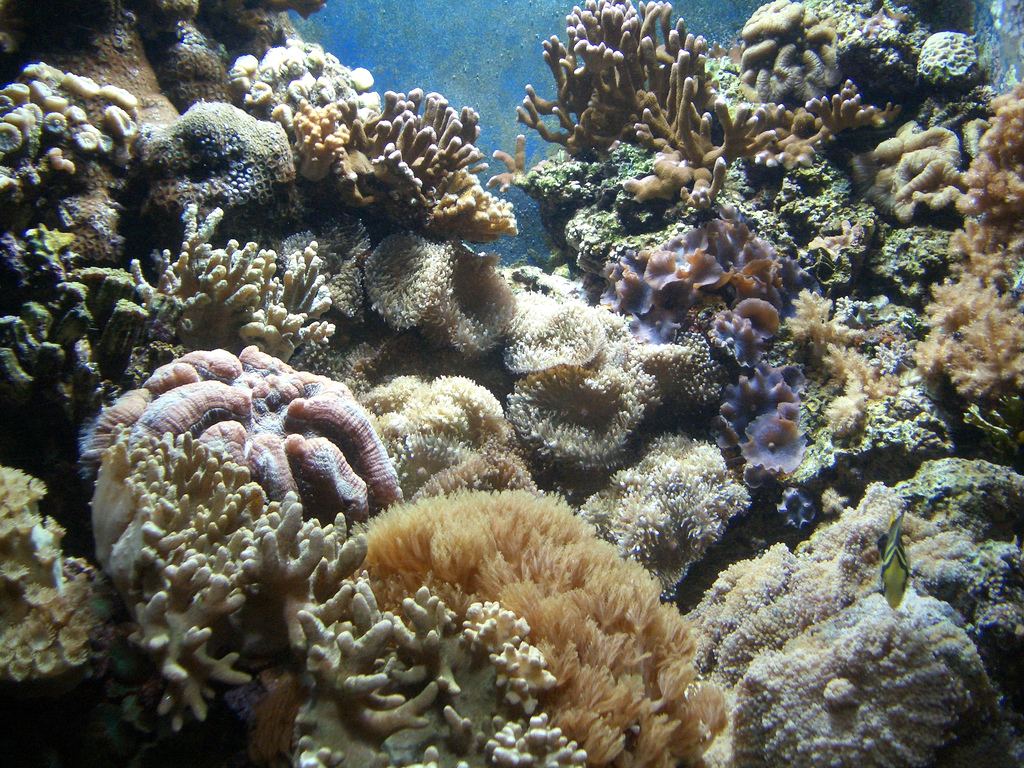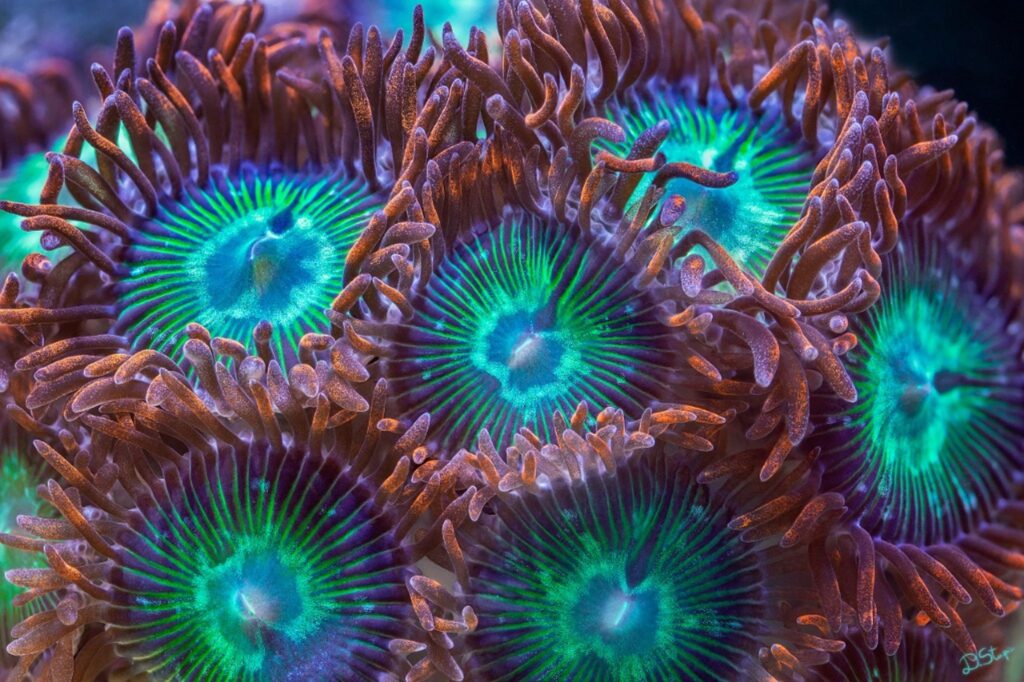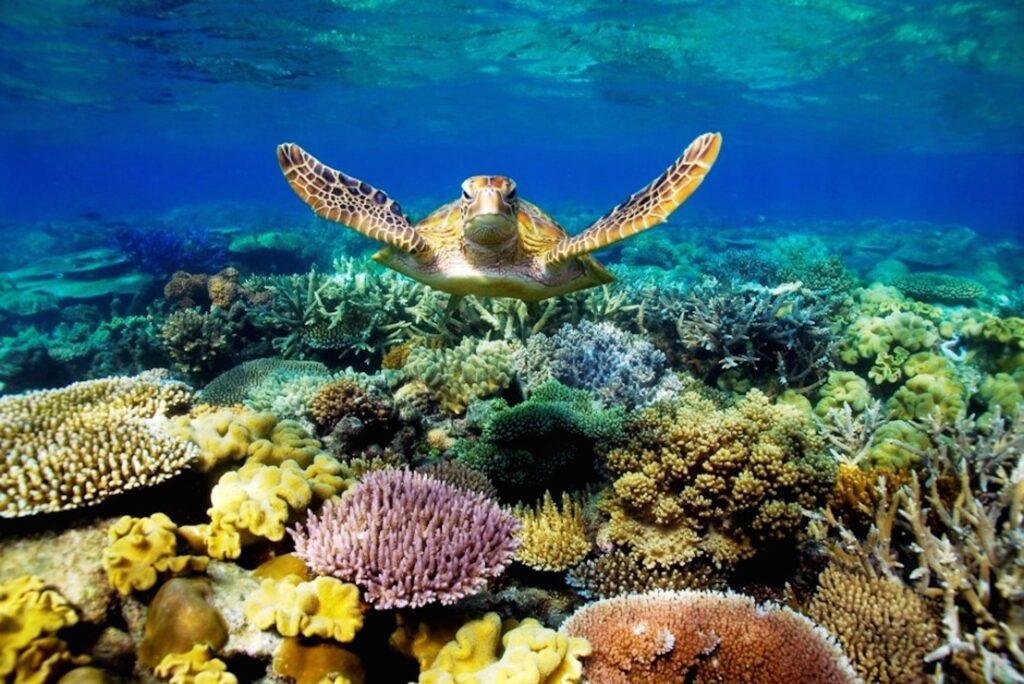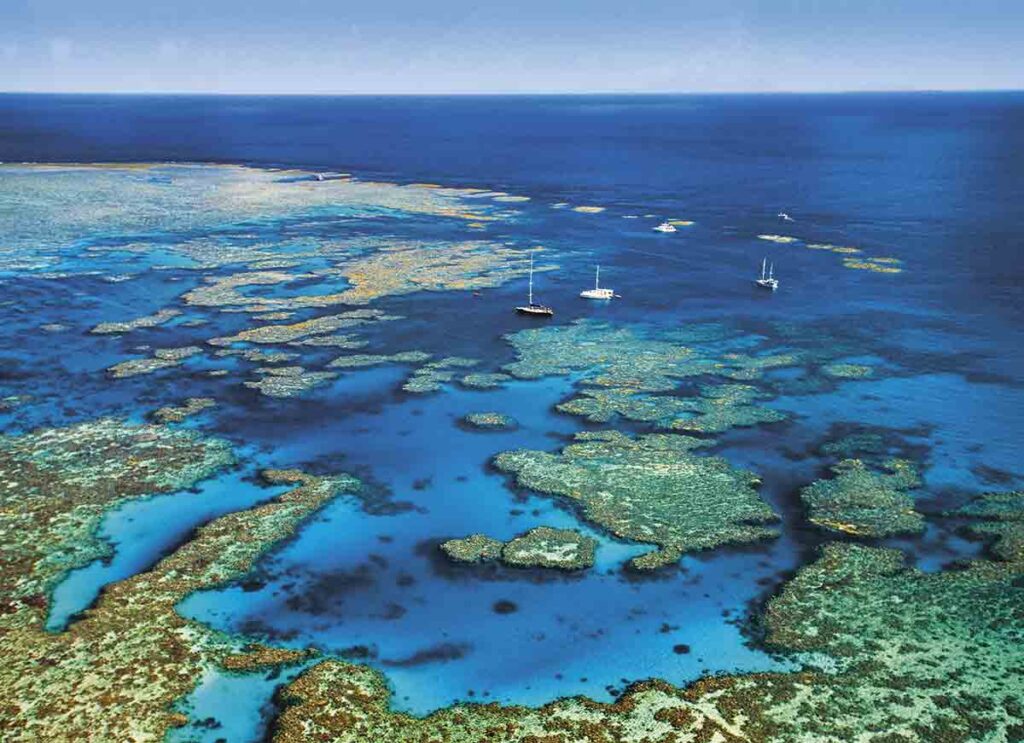Coral Reefs are made up of an enormous variety of animal species, constituting one of the most picturesque elements of the oceans. In them coexist a great biodiversity of species that obtain shelter and food there. The animal with the greatest presence is the Coral, which despite being so inanimate plays the most important role in said ecosystem. Find out here about the existing types of corals.
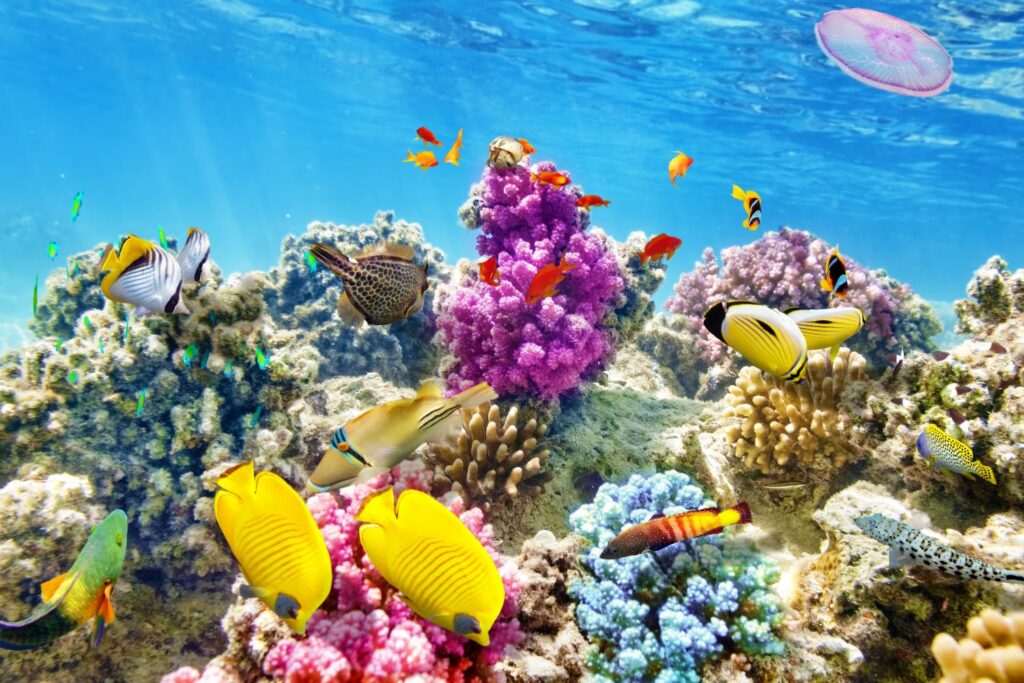
The Types of Corals
When we hear the word Coral, images of the Great Barrier Reef of Australia immediately come to mind, which without the presence of these animals that make up calcareous exoskeletons, such reefs, essential for ocean life, could not exist. Various types of corals are known, including some of a soft nature. But, do you know how many types of corals there are? In this article you will be able to find out about its variety, as well as its most important characteristics and locations.
Coral Characteristics
Corals are part of the Cnidaria phylum, as are jellyfish. Most of them are classified in the Anthozoa class, although there are some belonging to the Hydrozoa class. They are hydrozoans that produce a calcareous skeleton, called fire corals because their bite is dangerous. They are part of the coral reefs. Although most of the coral species are found in tropical reefs in marine waters, they also inhabit the waters of cold regions.
Numerous varieties of marine corals and about 6.000 species are known. We can get types of hard corals, which are those that have a calcareous exoskeleton, others have a flexible horny skeleton and others do not make up a skeleton itself, but have spicules submerged in the dermal tissue, which serves as protection . Most corals exist in symbiosis with zooxanthellae (symbiotic photosynthetic algae) that provide them with most of their food.
Some of these animals congregate in huge colonies and others live alone. You have tentacles around the mouth that allow them to collect food that floats in the water. As if it were a stomach, they have a cavity with a tissue called gastrodermis, which can be septate or with nematocysts (stinging cells, like jellyfish) and a pharynx that is connected to the stomach.
What are the Types of Corals?
Numerous varieties of corals constitute reefs, they are those that show symbiosis with zooxanthellae and are called hermatypic corals. Corals that do not become reefs are of the ahermatypic class. This is the classification that we will use to recognize the different types of corals. Corals can reproduce asexually through various mechanisms, but they still reproduce sexually.
Hermatypic Corals
Hermatypic corals are the kinds of hard corals, they have a stony exoskeleton made up of calcium carbonate. This kind of coral is in great danger due to the threat posed by the so-called "coral bleaching". Its coloration comes from its symbiotic relationship with zooxanthellae.
These microalgae, the main energy supplier of corals, are under threat due to rising temperatures in the seas as a result of climate change, excess sunlight and some diseases. When the zooxanthellae perish, the corals turn white and die, which is why hundreds of coral reefs have become extinct. Some of the types of hard corals include:
Genus Acropora or Staghorn Corals:
- Acropora cervicornis
- acropora palmata
- acropora prolifera
Genus Agaricia or Flat Corals:
- Agaricia undata
- Agaricia fragilis
- Agaricia tenuifolia
Brain corals, of various genera:
- Diploria Clivosa
- Colpophyllia natans
- Diploria labyrinthiformis
Hydrozoan type corals or fire corals:
- Millepora alcicornis
- stylaster roseus
- Millepora squarrosa
Ahermatypic Corals
The main feature of ahermatypic corals is that they do not have a calcareous skeleton, despite the fact that they can maintain a symbiotic relationship with zooxanthellae. Therefore, they also do not make up coral reefs, however, they can form colonies. The gorgonians whose skeleton is made up of a protein substance that they themselves secrete are of great importance in this group. In addition to this, the spicules are located inside its fleshy tissue, which serve as support and protection. Some of the varieties of gorgonians are:
- ellisella elongata
- Irrigorgia sp.
- Acanella sp.
Porous Corals
Another variety of soft coral can be found in the Mediterranean Sea and the Atlantic Ocean, this time from the Octocorallia subclass, the dead man's hand (Alcyonium palmatum). An unassuming soft coral that settles on rocks. Other corals of a soft nature, such as those of the genus Capnella, exhibit an arboreal conformation, branching from a main stem. There are corals of a porous or non-porous nature, possessing the first porous skeletons that allow their polyps to intertwine through the skeleton. Those non-porous hard corals have hard, massive skeletons.
How do corals reproduce?
Their reproduction can be sexual or asexual. For the first case, the eggs are fertilized internally and incubate outside or inside the polyps or they can be fertilized externally, resulting in planktonic larvae that move through sea currents or larvae that grow in the vicinity of the coral. that originated them. In the case of asexual reproduction, it is through cloning by budding.
What are Coral Reefs?
The significance of coral reefs lies in the fact that they make up a biome with peculiar features due to their different and striking forms of life. Corals are made up of different groups of cnidarians, whose exoskeletons have different shapes and are used by sponges, algae and other corals to live.
A great diversity of microorganisms, invertebrates and fish live in these wonderful habitats. That is why they are considered one of the most biodiverse and productive ecological communities on the planet. Additionally, they are very fragile environments that are subject to various threats such as environmental pollution and some predators such as the crown-of-thorns starfish (Acanthaster planci).
Where are they found?
They can be found in warm, transparent and calm waters. Its distribution is linked to water temperature, depth, intensity of light, degree of salt, turbulence and sedimentation. The best temperature for its growth is between 20 and 28 ºC. In relation to depth, 25 meters or less is the ideal depth.
Shallow waters are not conducive to their growth and development, since ultraviolet solar radiation does not allow their normal diffusion. But at depths greater than that referred to, the low intensity of light prevents photosynthesis. The most appropriate salinity is 35 parts/thousand, but some specimens support variations between 18 parts/thousand and 70 parts/thousand. The turbulence of the water also harms the growth of corals since the constant waves can cause them to break.
Finally, the proportion of suspended sediments in the environment can impact them by reducing the intensity of sunlight. Most coral reefs in the various types of oceans have a front section that is exposed to the open ocean, where most coral growth takes place, and a shallow section, about a meter deep. The rocky bottom section is made up of coral debris and skeletons of other organisms.
What are the Reef Classes?
Currently three different categories have been accepted as part of the classification of coral reefs. They are the following:
- Contour reefs: forms the most frequent form of this category of reef and are located adjacent to the coastline of islands or continents.
- barrier reefs: they are arranged parallel to the coastline but are separated from the shore by a lagoon of a certain depth. The example of greater reference is the Great Barrier Reef that is located parallel to the northeast coast of Australia.
- atolls: They are located above submerged volcanoes. They show a fairly circular shape and have an interior lagoon.
The Most Important Coral Reefs
The longest reef is the Great Barrier Reef, off the coast of Queensland in Australia, which has more than 2000 km², and is one of the largest natural constructions in the world. The area of the planet with the most varieties of corals and the greatest biodiversity in its coral reefs is the Coral Triangle, in Southeast Asia, where more than 500 varieties of corals are included (76% of the known coral species) and at least 2228 species of fish.
The second largest coral reef in the world is the Mesoamerican Reef (along the coast of Mexico, Belize, Guatemala and Honduras), it is located in the Caribbean Sea, and extends for more than 700 km from the Yucatan Peninsula to the Bay Islands off the northern coast of Honduras. Although it only occupies a third of the length of Australia's Great Barrier Reef, the Mesoamerican Caribbean Reef is home to an immense variety of organisms, including 60 types of corals and more than 500 varieties of fish.
seriously threatened
All over the planet, reefs are under threat due to continuous global warming, overexploitation and pollution of the seas. An obvious sign of their damage is to see coral bleaching, which happens when polyps and zooxanthellae perish, or a discoloration in their appearance as a sign that they are dead or suffering from some disease.
You may also be interested in the following articles:
- Marine Fauna of Mexico
- Saltwater fish
- Marine animals
